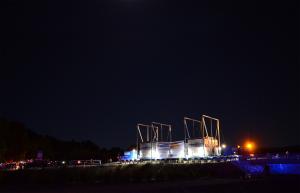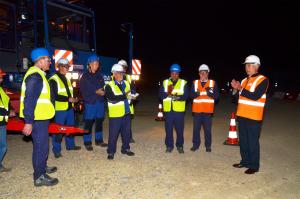The way is now open
The setting in Berre was reminiscent of a village fair: complete with lights piercing the night, an exhibition tent (set up by Agence Iter France, the organizers), a large crowd of onlookers of all ages and the feeling of excitement that exceptional events generate.
Combined with its escort of men and vehicles, the convoy formed a "sealed pocket" more than one hundred metres long, slowly progressing along public roads and some stretches of dedicated track and crossing the A7 and A51 motorways in four different locations. Measurements were made all along the 104-kilometre journey to verify that the stresses caused to the roads, bridges and roundabouts agreed with engineering calculations.
Although it will take several weeks to process and analyze all of the data that was collected over four nights, it was already clear on Friday morning that the reality was in near sync with the calculations—all measurements fell to within a few percentage points of what had been predicted.
As soon as the ignition key was turned off, two large cranes took position at its side to prepare for dismantling operations. By the following Monday, all 360 concrete blocks had been unloaded and the disassembly of the 88-axle vehicle was well advanced.



